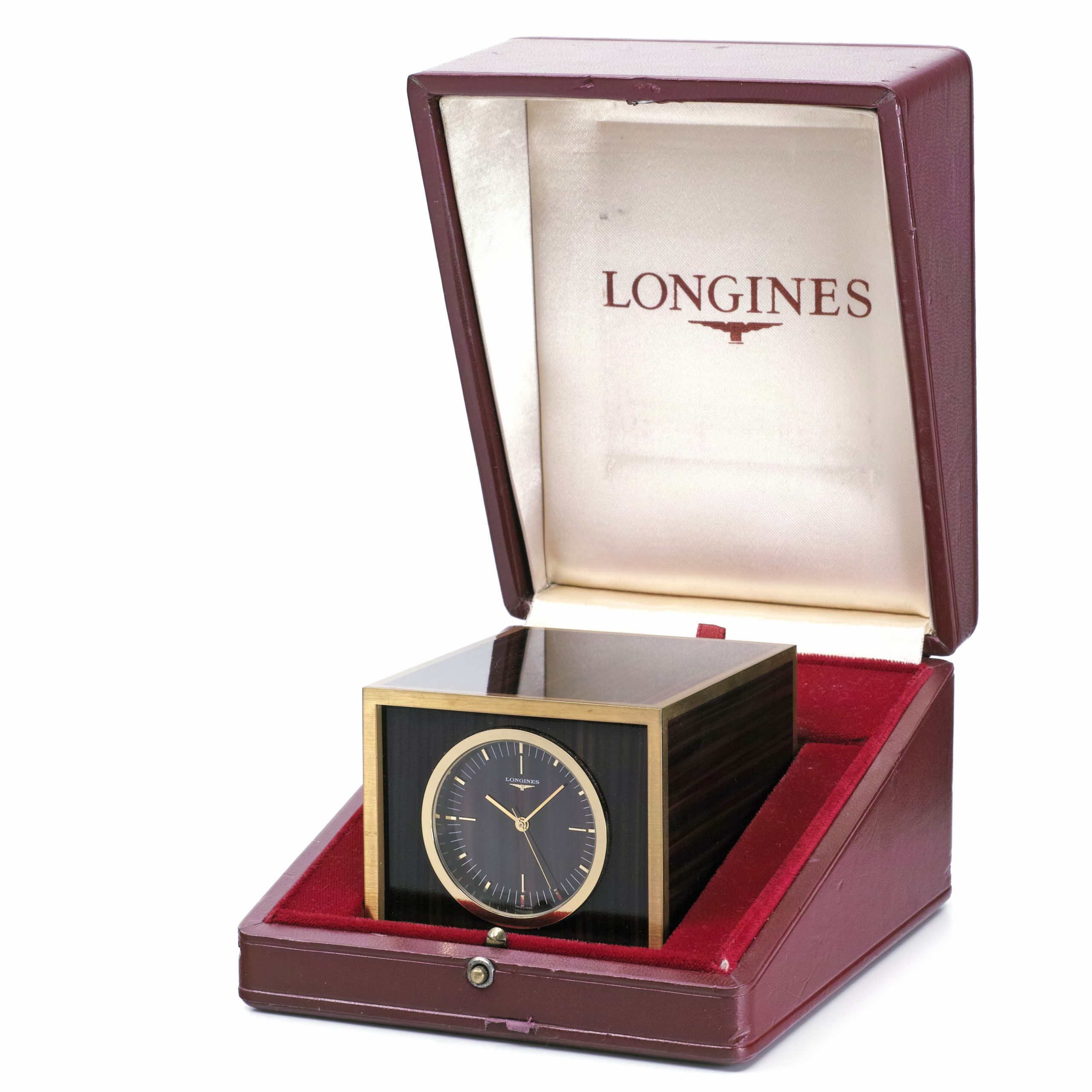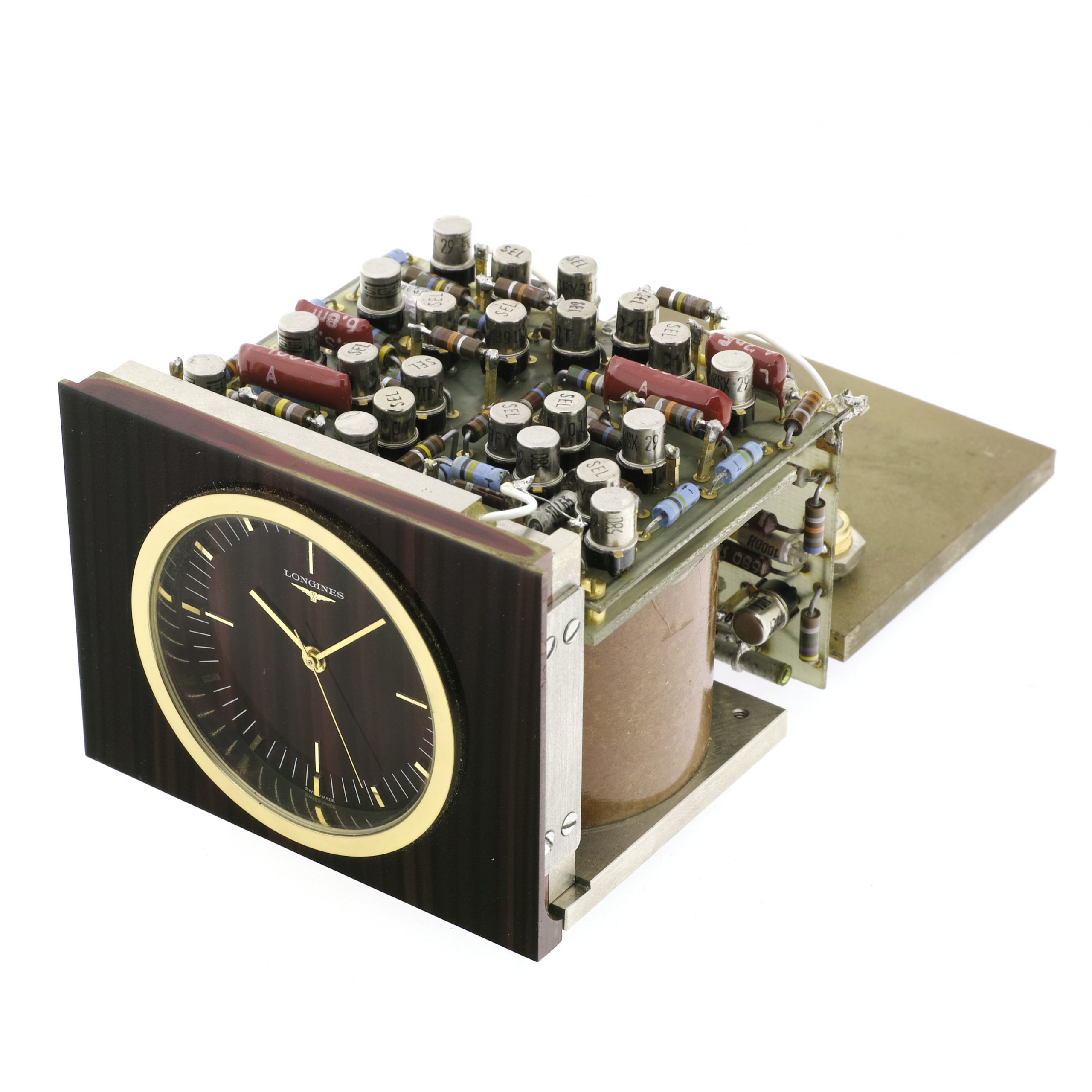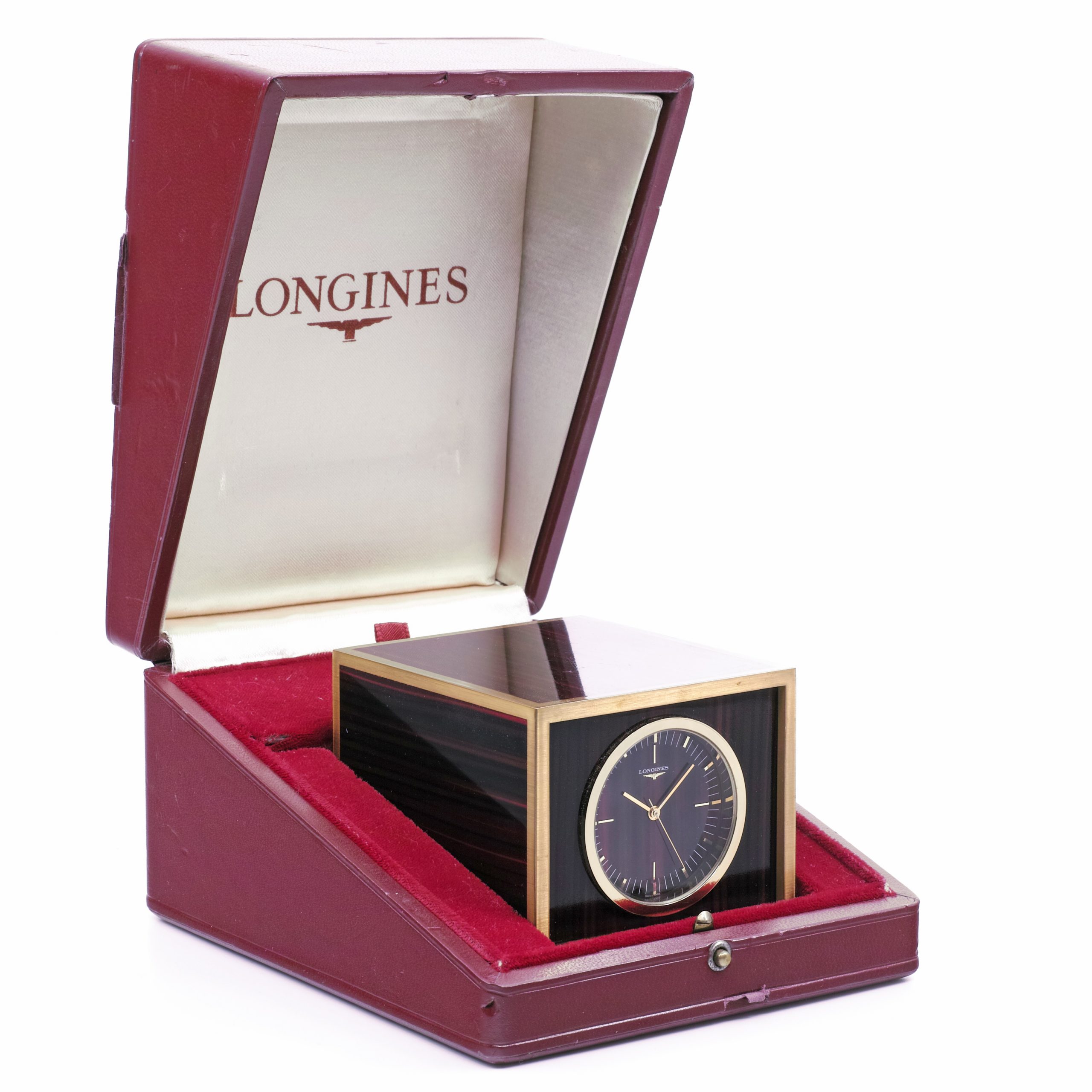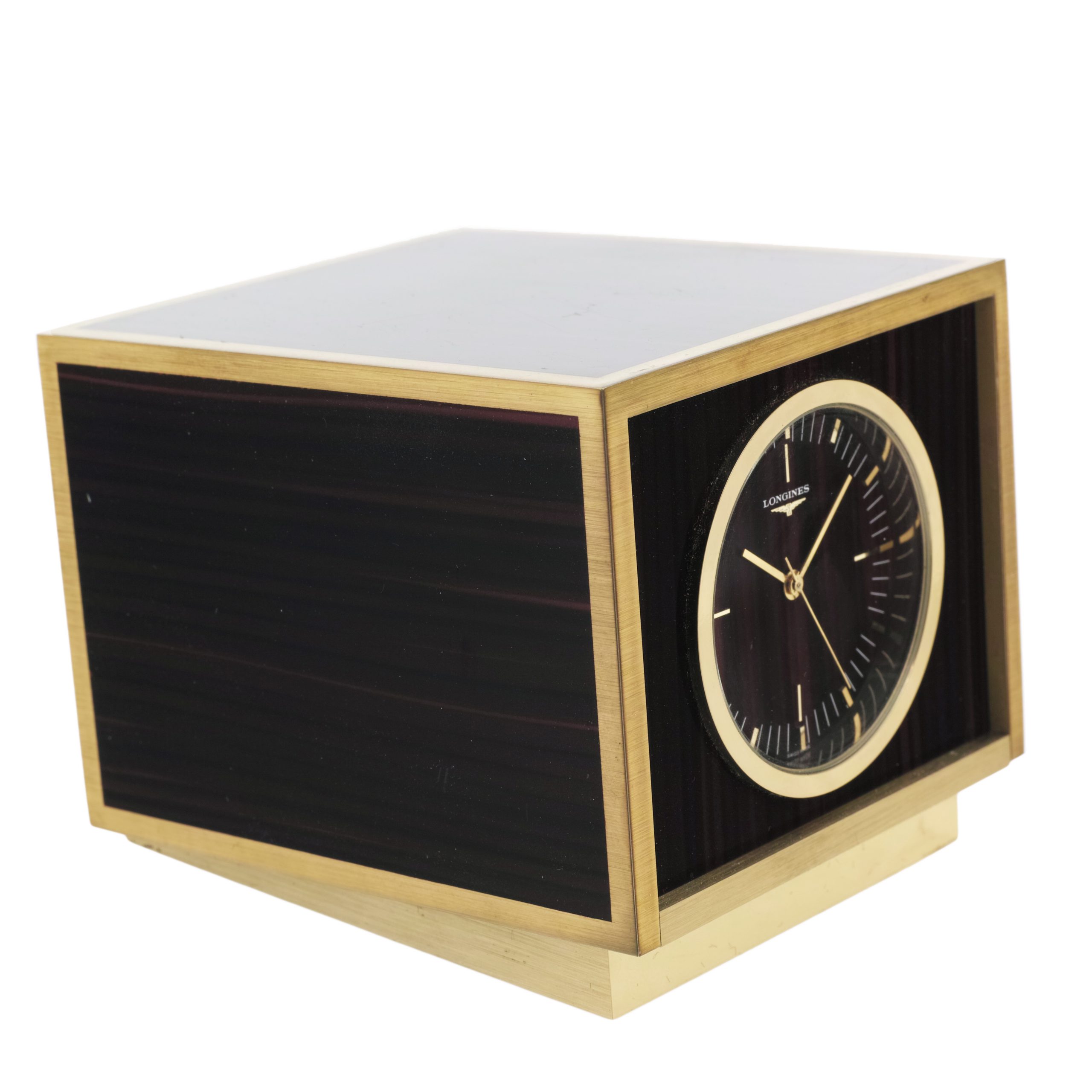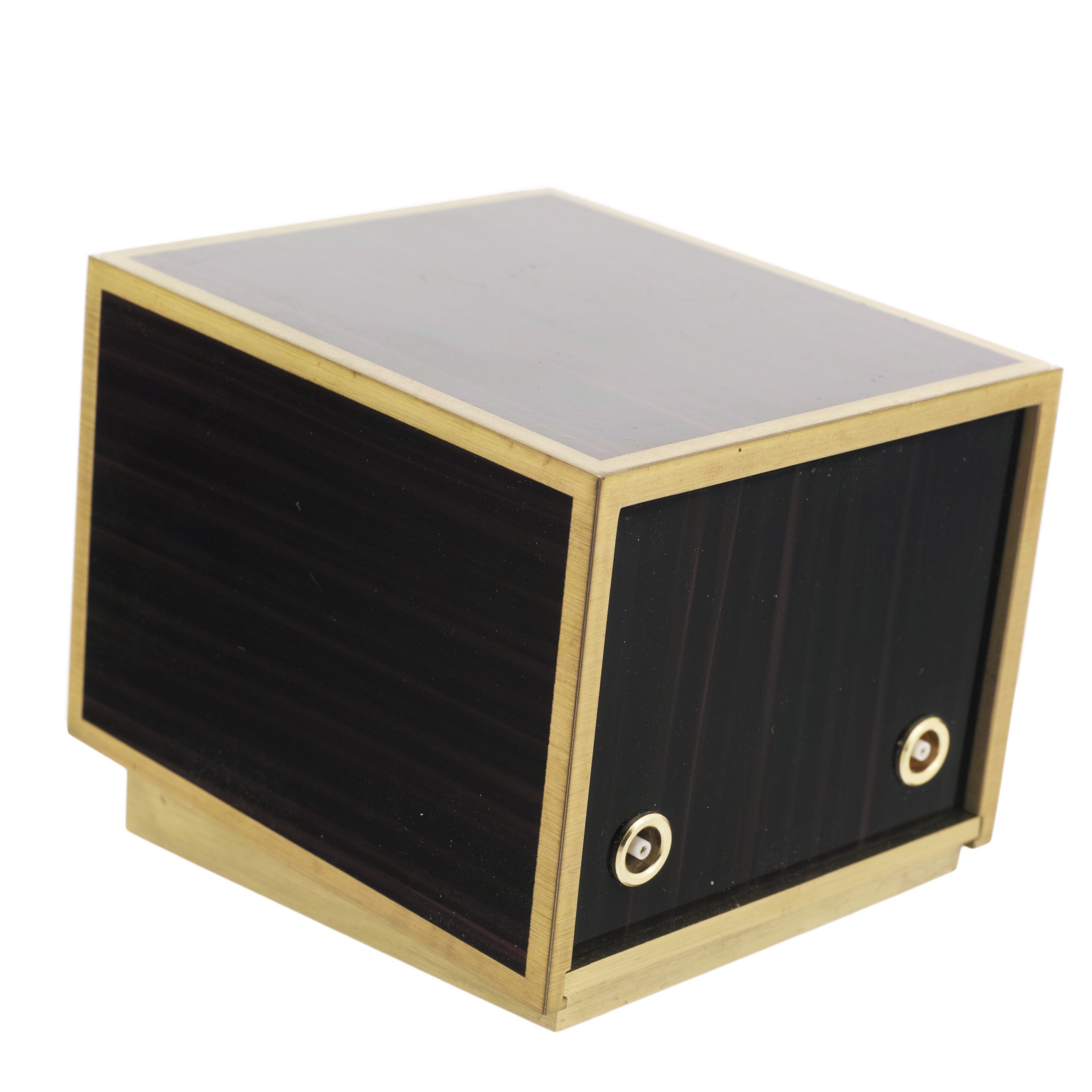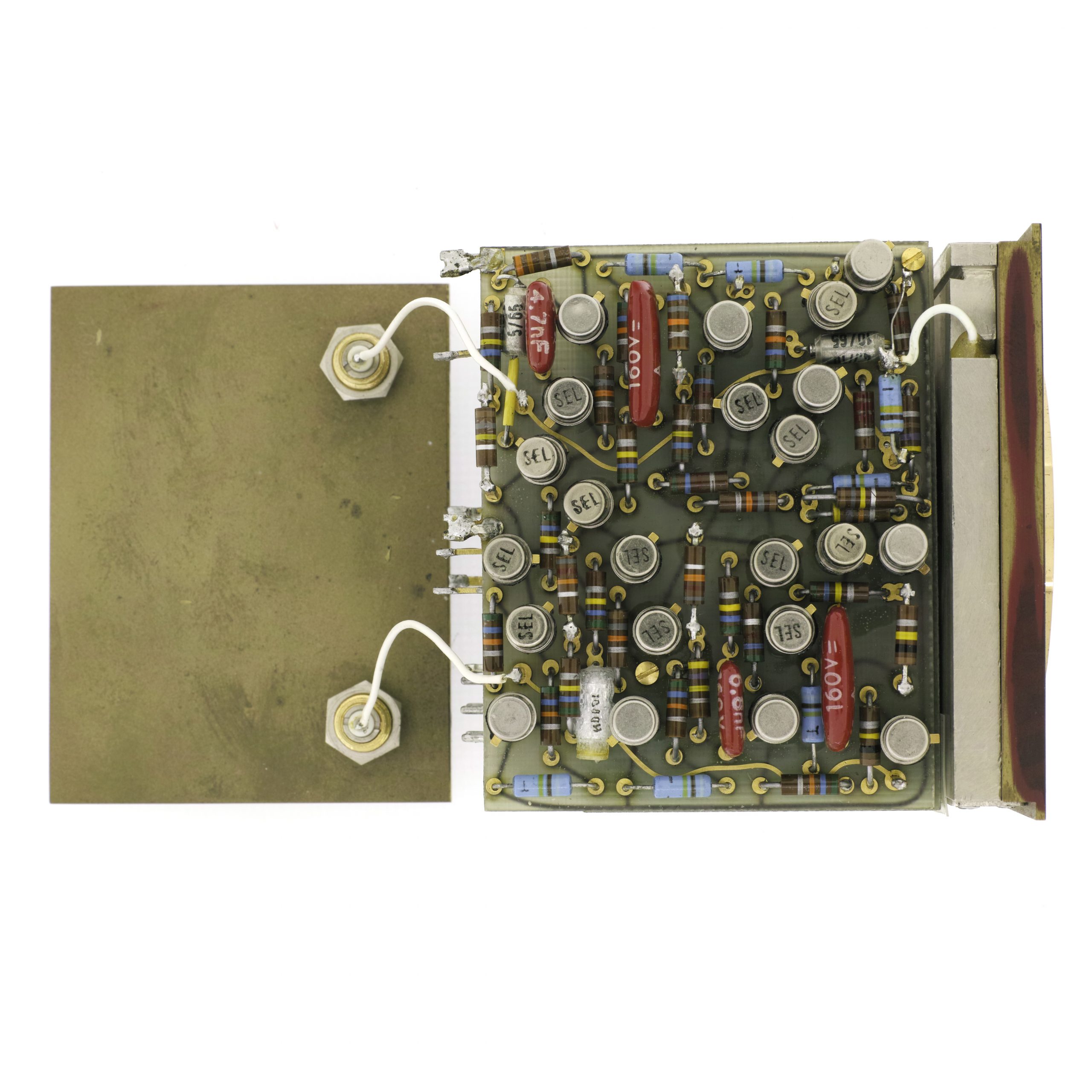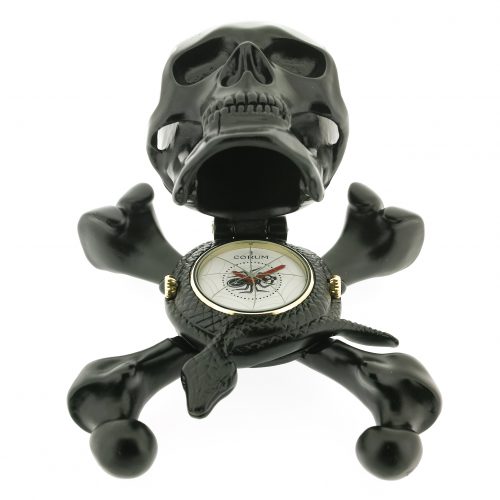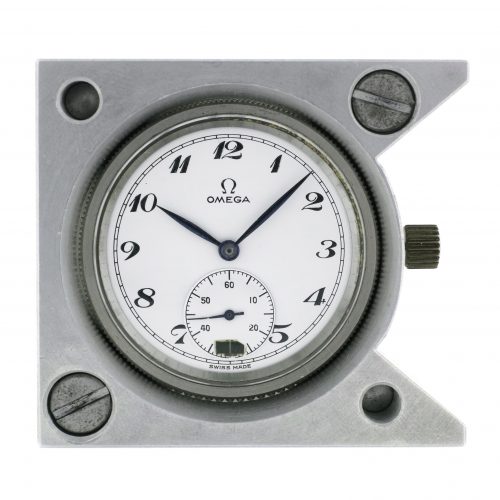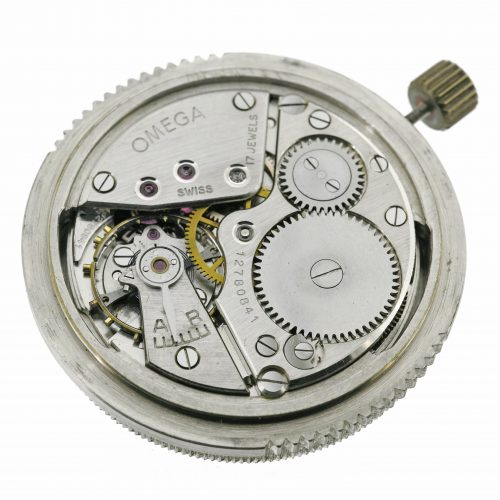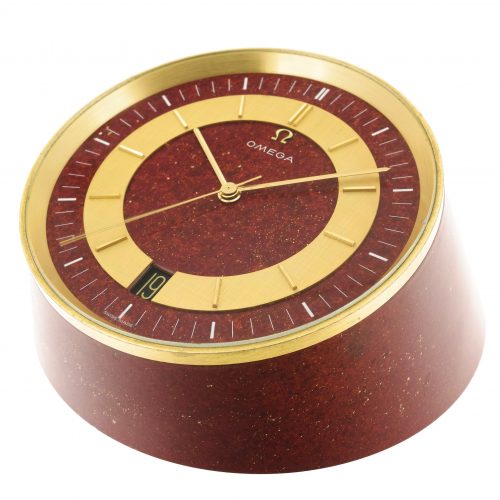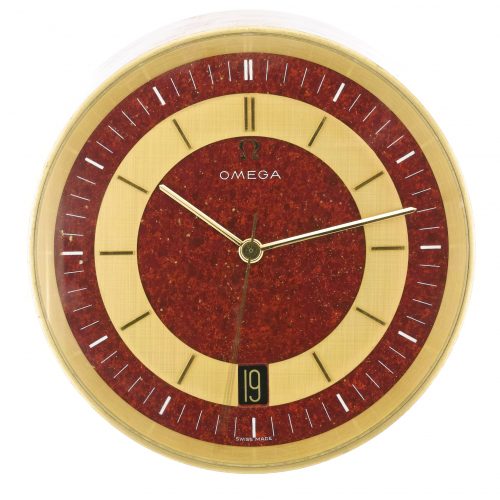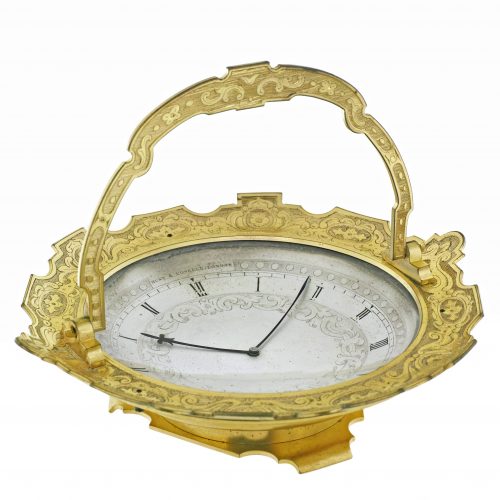Extremely rare LONGINES navigational electronic chronometer clock, Ref. 7780, SN: 6697 with its original box, made circa 1965, featuring complicated early quartz movement calibre 800, used mostly for observatory chronometry trials breaking many records in the Neuchâtel Observatory competitions. Longines developed this unique calibre for on-board chronometers, reaching new heights on accuracy. It easily outsrtipped the records set by all mechanical devices in observatories. The case number is “1003” and the movement is signed “Longines Golay 6697”. The function of the clock is not tested in absence of the right power source.
Four body heavy cube-shaped Chinese lacquer-case in wooden-optic, “Soleil” dial with raised gilded indexes, gilded hands and sweep centre seconds. White Longines signature with applied glided Longines winged hourglass logo. Quartz movement, cal. 800, 64 x 56 x 48 mm, frequency 12000 cycles/second. 3 mercury batteries (1.35V), 15 jewels.
Few quotes from Longines documents:
In this month of February 1965 Swiss and foreign newspapers once again mentioned Longines. Longines has, in effect, broken a new record at the Neuchâtel Observatory competition. In the “single pieces” category, the electronic navigational chronometer entered by our company came first, with a result of 0.15, while the absolute record for the category of mechanical navigational chronometers was 2.24, established in 1963 : Longines’ electronic navigational chronometer exceeded all others in its class entered in the same competition by the Japanese, which means that they have been beaten on home ground by Swiss watchmaking. This is not just a success, it is a true victory.
It was created in collaboration with B. Golay S.A. in Lausanne. J.-C. Berney, an electronic engineer, drew up the plans and traced the printed circuits for the device under the guidance of Monsieur Golay. It was at this stage that they contacted Longines, and we were immediately interested in this new idea. The printed circuits, the assembly and the manufacture of the mechanical parts were all carried out in our workshops in St. Imier.
Dimensions : around 8 x 7 x 6 cm, shipping weight is 2 kg.


